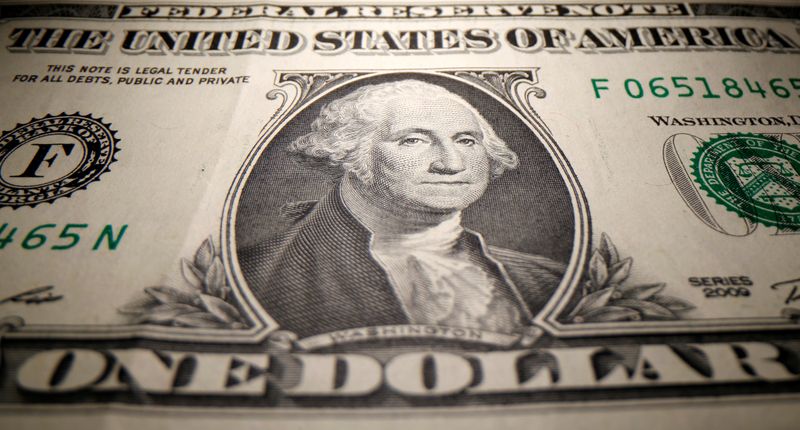By Tom Westbrook
SINGAPORE (Reuters) – The dollar nursed last week’s losses on Monday and was headed for its first monthly drop in five months as investors have scaled back bets that rising U.S. rates will spur further gains and as fears of a global recession have receded a little.
The week ahead is full of data that could provide clues on the outlook for global growth, U.S. interest rates and the dollar with Chinese Purchasing Managers’ Index figures, U.S. jobs numbers and growth data in resource bellwether Australia.
Trade was likely to be lightened through Monday as U.S. stock and bond markets close for the Memorial Day public holiday.
Early in the Asia session the dollar was a fraction weaker on the euro at $1.0728, just above a five-week low, having dropped about 1.5% on the common currency last week.
The risk-sensitive Australian and New Zealand dollars were firm after a Friday rally, while the yen was a fraction weaker at 127.28 per dollar.
The Aussie hovered near a three-week high at $0.7161, as did the kiwi at $0.6536. [AUD/]
“The dollar can fall further this week. Were it not for China’s lockdown, the global outlook would be brighter, and the dollar lower,” said Joe Capurso, head of international economics at the Commonwealth Bank of Australia (OTC:CMWAY) in Sydney.
The dollar index, which hit a two-decade high of 105.010 earlier in May was steady at 101.660 on Monday. Sterling held last week’s gains at $1.2628.
China’s yuan held steady at 6.7210 per dollar in offshore trade, buoyed by progress out of virus lockdowns.
Shanghai said on Sunday “unreasonable” curbs on businesses will be removed from June 1, while Beijing reopened parts of its public transport as well as some malls.
Most analysts are wary of calling an outright end to the recent dollar strength.
But positive U.S. consumer data and the easing lockdowns in China is helping kindle hopes about global growth, which tends to support exporters’ currencies at the dollar’s expense.
Investors have also seized on hints the Federal Reserve, once it has hiked aggressively over the next two months, might then take a breather.
“The Fed has stopped short of validating calls for even more tightening, leading to a plateau in forward expectations,” said NatWest Markets’ global head of desk strategy, John Briggs.
Cryptocurrencies remain on the back foot and bitcoin has struggled to recoup losses made during a broad sell-off of risk assets at the start of the month. It last bought $29,333.



